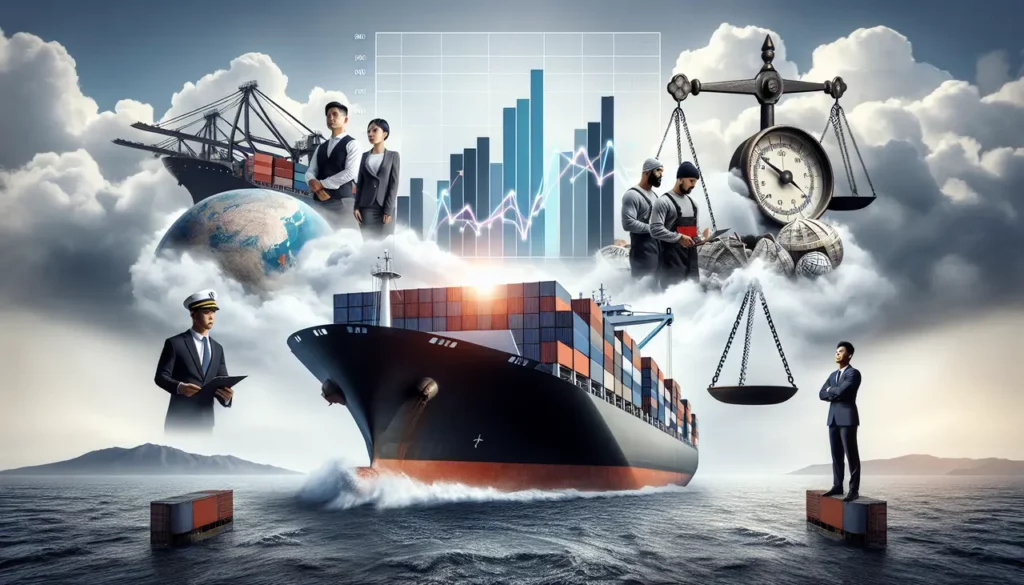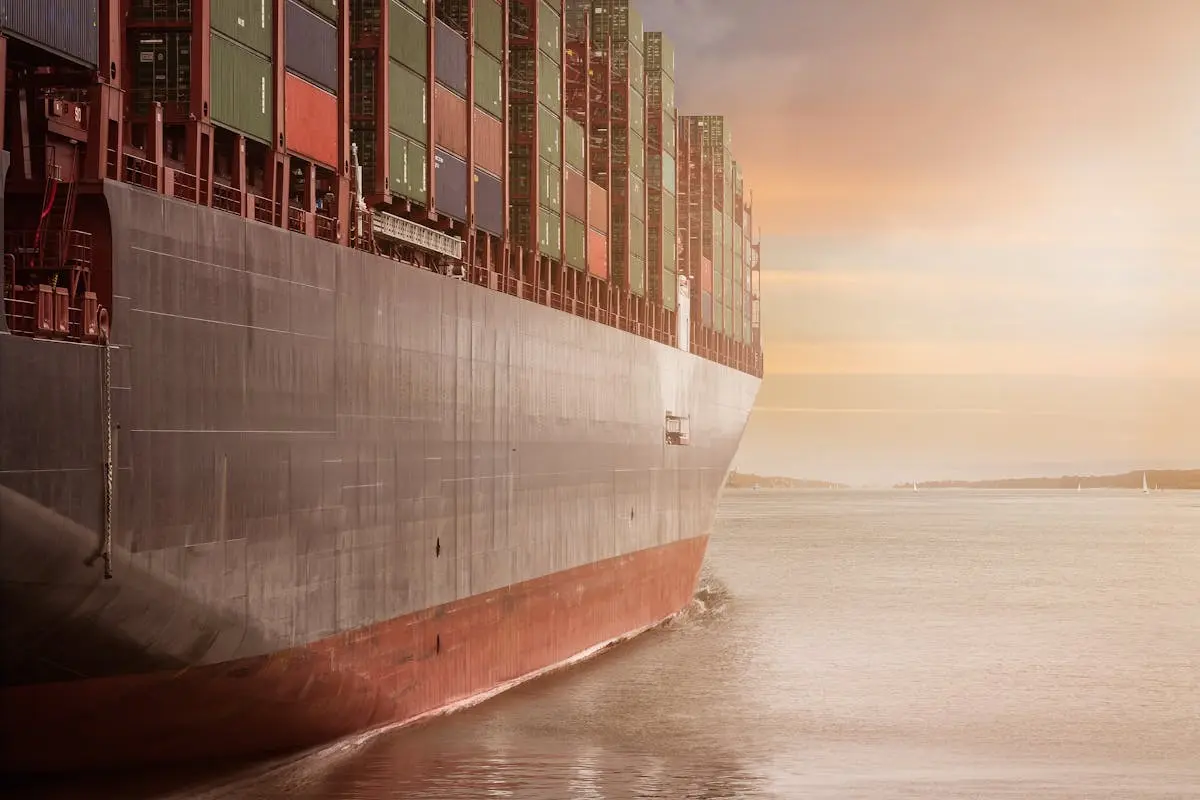Introduction: Understanding Sea Freight Costs
Sea freight costs can be as unpredictable as the ocean itself. Have you ever wondered why the price to ship goods across the sea keeps changing? It’s not just about the distance. Several factors dive deep into this fluctuation. First, fuel prices play a huge role. Just like cars, ships need fuel, and when oil prices go up, so does the cost of shipping. Then, there’s demand and capacity. Imagine a crowded train; the more people want to get on, the higher the ticket price might rise. The same goes for shipping space on cargo ships. More demand means higher prices. Seasonality is another key player. During certain times of the year, like before holidays, there’s a rush to move goods, pushing prices up. Lastly, let’s not forget about port fees and route changes. Every time a ship docks, there are fees to pay, and if a ship has to take a longer route, it’s going to cost extra. So, when you hear about sea freight costs going up or down, remember, it’s a mix of fuel prices, demand and capacity, seasonality, and the nitty-gritty details of port fees and routes.
Global Economic Factors Impacting Sea Freight Costs
Global economic factors play a big part in how sea freight costs move up and down. Picture this: the world economy acts like a giant machine. When all parts work smoothly, shipping costs are stable. But when something goes wrong, like a sudden increase in oil prices, this machine gets a hiccup, and shipping costs can jump. For starters, oil prices are like the blood flowing through the veins of sea freight; higher oil prices mean higher fuel costs for ships, and this bumps up the cost of sending goods across the sea. Then, there’s the demand for goods. When economies are booming, everyone wants more stuff, leading to congested ports and slower deliveries. Shipping companies hike prices to manage this demand. Exchange rates also throw their weight around. A stronger dollar might make shipping cheaper for some but pricier for others. Lastly, trade policies and tariffs can either smooth the path for sea freight or put up roadblocks, affecting how much it costs to move goods from one country to another. So, as these factors dance together, they make the sea freight costs sway too.
Seasonal Variations in Sea Freight Rates
Seasons change, and so do sea freight rates. You might have noticed that shipping prices go up and down. That’s because of seasonal variations, a big player in this game. Let’s break it down. During peak seasons, like before holidays or in summer, everyone wants to ship goods. The demand shoots up. More demand means higher prices. It’s simple: when everybody wants to book a spot for their cargo on ships, carriers hike up the rates. Then comes the slow season. Think about the time after the holidays or during early spring. The demand drops. Fewer people want to ship, so the prices go down. Carriers lower their rates to attract customers. It’s like a see-saw. High demand, prices go up. Low demand, prices go down. Keep an eye on the calendar when planning your shipments. Timing can save you a chunk of change.
The Role of Fuel Prices in Sea Freight Costs
Fuel prices are a big deal when it comes to sea freight costs. Think of it this way: ships powering across the oceans need fuel, lots of it. When oil prices go up, the cost of moving goods across the sea also climbs. It’s simple, really. The price you pay for shipping something from one country to another can change if fuel costs shoot up. And trust me, oil prices love to jump around due to factors like political instability, natural disasters, or changes in world oil supply. So, when planning your shipping costs, always keep an eye on those fuel prices. They can either be your best friend or your worst enemy, depending on their mood.
Shipping Capacity and Its Effect on Pricing
Shipping capacity plays a big part in how much you pay for sending your goods across the sea. Think of it like this: the more room on a ship, the cheaper it is to send your stuff. But when space gets tight because lots of people want to ship goods at the same time, prices go up. It’s all about supply and demand. When there’s a ton of products needing to go from one place to another and not enough ships to carry them, shippers can charge more. On the flip side, if there’s less demand or a lot of ships available, you might get a better deal. It’s kind of like booking a flight – prices change based on how many seats are left and how many people are trying to buy them. So, when thinking about shipping costs, remember it’s not just about the distance your goods are traveling. It’s also about how many other goods are trying to hitch a ride on the same boat.
Regulatory Changes and Environmental Policies
Governments and international bodies often change laws or introduce new ones that impact how goods move across oceans. For example, stricter environmental policies can mean ships need expensive upgrades or must use pricier, cleaner fuels, pushing up costs. Then, there’s the Sulphur Cap 2020 by the International Maritime Organization (IMO), limiting sulphur emissions from ships. This rule forced many companies to invest in cleaner, but more costly, fuel options or retrofit ships with sulphur-cleaning technology. Both actions lead to higher operating expenses for carriers, which then trickle down to higher sea freight rates. Simply put, when it costs more to keep a ship moving legally and cleanly, it’ll cost more to ship your goods across the sea.
Demand and Supply Dynamics in Sea Freight
In the world of sea freight, the dance between demand and supply plays a huge role in how much you’re going to pay. Think of it like tickets to a concert. When everybody wants to go, prices shoot up. But if there’s another show happening at the same time, maybe not so many folks are interested, and the prices drop. It’s the same with shipping goods across the ocean. When lots of businesses want to ship their goods at the same time, perhaps during the holiday season, the demand is high. This pushes the cost of shipping up because there are only so many ships and so much space on those ships. On the flip side, if the demand drops because it’s a slow season or there’s a downturn in the economy, prices can go down. But it’s not just about how many people want to ship things. It’s also about how much shipping capacity is available. If new ships are launched, suddenly there’s more room for everyone’s goods, and the cost might stabilize or even fall. However, if there’s an issue, like a port strike or a route blockage (remember the Suez Canal incident?), the available capacity drops, and prices can skyrocket. So, the cost of shipping your stuff by sea depends on how many other people are trying to do the same thing and how many ships are available to carry all those goods.
Technological Advancements and Their Impact
Technological advancements directly impact sea freight costs, making the waters of shipping prices either calm or stormy. Here’s the lowdown. Better technology, like upgraded ships and more efficient fuel, often means ships can carry more goods using less energy. Sounds great, right? In theory, this should lower costs. However, the initial investment in such tech can be high, leading to a temporary spike in freight charges as companies recover costs. Also, with the rise of digital technology in tracking and managing shipments, there’s better visibility and efficiency. This could mean savings for shippers in the long term, but again, setting up these systems ain’t cheap. In short, while tech advances aim to cut costs and speed up shipping, they can cause price fluctuations as the industry adjusts. So, when you see freight charges going up and down, remember, technology could be playing a big part.
The Influence of International Trade Policies
Trade policies play a massive role in sea freight costs. When countries change their trade policies, like increasing tariffs or imposing restrictions, it directly affects shipping costs. For example, if Country A decides to hike tariffs on goods from Country B, the cost of shipping those goods will likely increase. This is because the added tariffs make the process more expensive, and those costs trickle down. Sometimes, governments introduce subsidies for certain products or industries, which can lower shipping costs for those items. However, it’s a double-edged sword. While subsidies can reduce the cost to ship specific goods, they can also lead to an imbalance in trade, affecting the cost and volume of sea freight globally. In short, the ebb and flow of international trade policies are a dominant force behind the fluctuations in sea freight costs. Keep an eye on these policies, and you’ll start to notice patterns in shipping rates.
Conclusion: Navigating Sea Freight Cost Fluctuations
Understanding why sea freight costs go up and down like waves can help you navigate your shipping needs better. Remember, several key factors cause these fluctuations. Think about demand and supply, the price of fuel, port charges, and currency exchange rates. They all dance together, making the cost of shipping by sea change often. But it’s not all out of your control. By planning ahead, being flexible with your shipping dates, and always staying informed about global events that could impact these costs, you can make smarter decisions. It’s like being the captain of your own ship in the vast ocean of global trade. Keep a keen eye on the horizon, and you’ll find ways to manage these changes, rather than being caught off guard.


